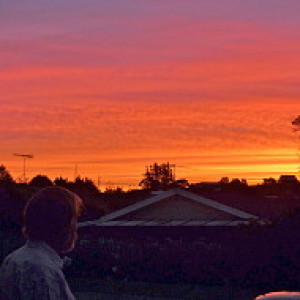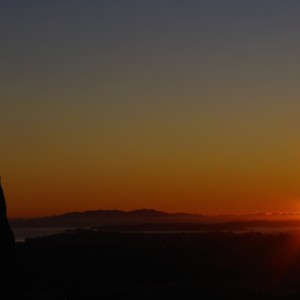St David's quatrefoils
This morning I went to the summit of another of Auckland's volcanic cones; Maungakiekie (One Tree Hill, which now has no tree on the summit). I drove to the park around and then walked and ran to the top in time to get a photo of the sunrise from beside the base of the monument (see my extra photo for today).
On the way back home I drove along Khyber Pass Road, and saw this church. The newly risen sun was shining off the brass quatrefoils, and I remembered S telling me about the efforts being made to save the church.
From that article I have extracted the following abbreviated information:
St David's Presbyterian Church on Khyber Pass Road in central Auckland has always been a soldier's church. However, its future became clouded after the Christchurch earthquakes, when the Christchurch Cathedral tower collapsed. Engineering analysis revealed that the almost 90 year old church falls below the requirement for such a building of meeting at least 34% of the earthquake resistance demanded of new buildings. The Presbyterian Synod closed the doors in December 2014. Restoration and strengthening was beyond the means of the church and especially the present very small regular congregation.
St David's foundation stone was laid on Anzac Day 1927 as a soldiers' memorial church. It has been home to the Royal New Zealand Engineers, and 2015 would be the first Anzac Day since 1927 when there would not have been a service in the church.
Art consultant Paul Baragwanath (a member of a trust trying to restore the church) and New York based Auckland born artist Max Gimblett formed the idea of covering the church with 7000 brass quatrefoils, a shape Gimblett uses extensively in his painting. Each piece would be about the size of a soldier's hand. The quatrefoil is “a symbol of peace, and in this context becomes a poppy," Baragwanath says.
Silkscreened on each piece is one of seven designs Gimblett produced in his signature style of abstract expressionism meets Eastern calligraphy. Once the basic concept was agreed, Baragwanath worked his contacts, pulling together a team of 400 volunteers and pro bono professionals to mount a major art project at short notice.
Many have donated their time and/or their skills or equipment to attach the quatrefoils to the walls in such a way that they look random and unforced. The process of baking, screening and weathering means each piece is unique, introducing a human element according to Baragwanath. Each work is meant to represent those who served in World War 1; “soldiers, nurses and others," Baragwanath says. "The marks are the spirit of those people."
The quatrefoils can be bought for $100 each. Baragwanath says if sales take off, more than 7000 can be produced. It will take a lot of brass to reopen the church, which the Friends of St David's Trust sees as being a civic asset for a community which is swelling as surrounding sites are filled with apartments.


Comments
Sign in or get an account to comment.


